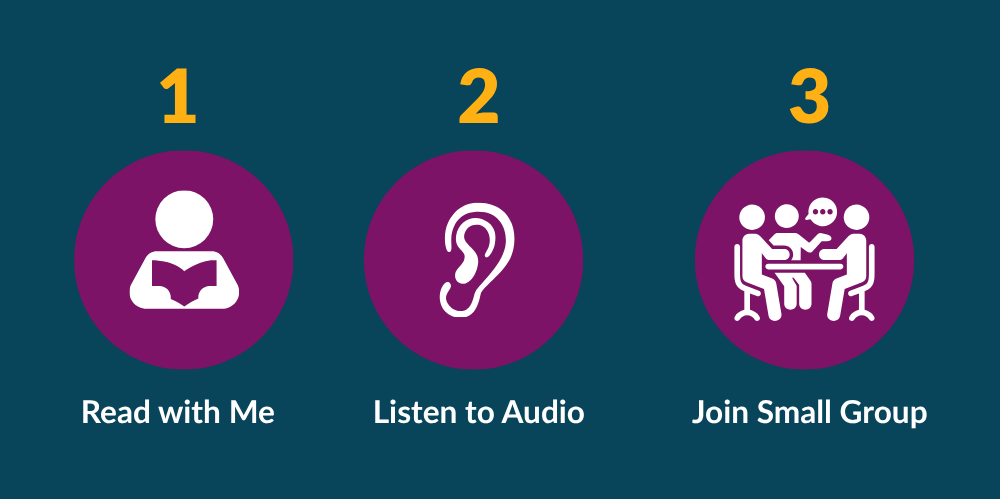Years ago, I took a short video of my son, Boden, when he was about 2. He was trying so hard to put on a rubber glove all by himself.
You could see his little brow furrowed in concentration, hands twisting the wrong way as he worked the fingers into place. And I’ll be honest, every muscle in my body wanted to reach out and help him. It would have taken me two seconds to slide that glove on and move on with our day. But I stopped myself, because I knew if I did it for him, he wouldn’t learn to do it himself.
It took patience on both our parts, but the look on his face when he finally got that glove on was priceless. That moment reminded me of how hard it can be to watch someone struggle, especially when you care deeply and just want them to succeed. And that’s what makes the work of paraeducators so incredibly important and, at times, so challenging.
The “Sweet Spot” for Learning
There’s a fine line between productive struggle and unproductive struggle. Productive struggle is when a student is stretching just beyond what they can do alone, building the skills and confidence they need with your guidance. In the video above, Boden was engaged in productive struggle. Unproductive struggle is when the task feels impossible, and frustration takes over.
A Russian psychologist named Lev Vygotsky studied how people learn and grow. He’s best known for a concept called the Zone of Proximal Development, a fancy way of describing that sweet spot for learning. It’s the space between what a learner can do independently and what they can do with support. When we work inside that zone, students experience success while still being challenged.
As paraeducators, your role is to help students find and stay in that zone. You’re there to notice when a student is ready for a little more independence and when they need a little more scaffolding. You’re the person who helps them recognize when to keep trying, when to ask for help, and when to use a tool or strategy that helps them move forward. As you know, there are things every learner can do on their own, and things they can’t do yet without support. But the goal is always the same: to internalize those supports so that, over time, they need them less and less. You are the bridge that helps students get there.
Research backs this up. A 2022 article in Teaching Exceptional Children synthesized decades of best practices and called for a shift away from constant one-on-one prompting or providing students with answers, which can unintentionally build dependence. Instead, they found that the most effective paraeducators act as facilitators rather than fixers. They model strategies, fade assistance over time, and encourage students to problem-solve, make choices, and reflect.
Here are a few ways you, as paraeducators, can use UDL to promote independence while staying aligned with your teacher’s plans.
Start with the Goal, and Confirm It with the Teacher
Before offering help, check with the teacher to clarify the purpose of the activity and what success looks like for students; you may even find that it aligns with the student's IEP goals. Once the goal is clear, anchor your support around it. For example, if the teacher’s goal is for students to compare two characters, you might say, “Your goal is to compare two characters. Would you like to start by reading with me, listening to the audio, or skimming for dialogue?”
For students with more extensive needs, consider the first, then approach and the use of visuals to support the vocabulary and choices. You could start by saying, “First, we will compare two characters (point to the characters). Then, you can choose how you would like to start, by reading with me, listening to the audio, or reading with a small group.”

Staying centered on the shared goal keeps support purposeful and consistent across the team.
Use Micro-Choices to Build Agency
Work with the teacher to identify small, structured choices that fit within the plan for the lesson. The goal is not to create new options, but to make the teacher’s built-in flexibility more accessible to students. You might ask, “Would you like to read with a partner or listen to the recording?” or “Would you rather use sticky notes or a graphic organizer to track your ideas?” Micro-choices make learning personal and manageable, encouraging engagement and ownership without changing the learning goal, and often align with the student’s IEP accommodations
Use Wait Time and a Prompt Ladder
Coordinate with the teacher on a consistent sequence for prompting that aligns with the student’s IEP accommodations and goals, if applicable, so students experience predictable, gradual support. For example:
- wait silently for five seconds
- gesture or point to a visual cue
- offer a short verbal reminder
- model once if needed.
You might say, “What’s your first step?” [wait], “Point to the picture that shows what comes next,” [gesture], or “Say that step out loud,” [verbal]. This shared structure ensures students always have time to think and act independently before an adult steps in.
Coach with Questions Instead of Giving Answers
Before offering a solution, pause and ask one or two guiding questions to help the student reflect and problem-solve. For example: “What is the question asking you to do?” or “Which tool could help right now?” These questions could be asked verbally, through visuals, or through a checklist - each supporting executive functioning skills and encouraging the student to think independently and apply strategies they’ve learned from the teacher. Align these coaching questions with the teacher’s expectations so everyone uses a consistent approach.
A Final Word of Encouragement
So to all the paraeducators reading this: know how valuable you are. You are the patient hands-off support when it’s tempting to jump in. You’re the calm encourager in moments of frustration and the quiet cheerleader when a student takes that small but mighty step toward independence. You help learners see that they can do hard things, and that the goal isn’t perfection, it’s progress.
And if you ever find yourself tempted to jump in too soon, remember Boden and the rubber glove. Sometimes the greatest gift we can give a learner is the time and space to figure it out for themselves.



